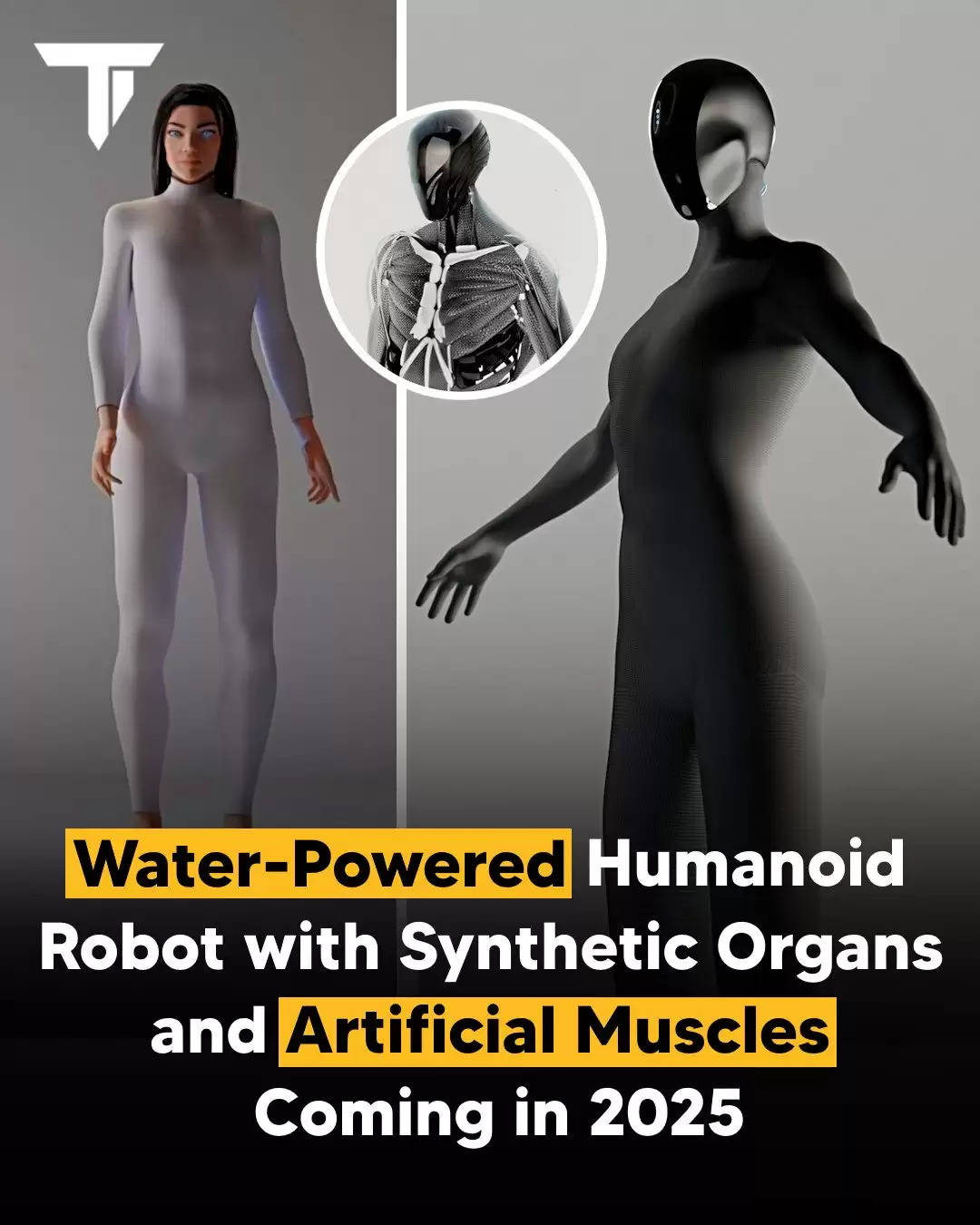Clone Robotics Unveils Clone Alpha: The First Full-Scale Humanoid Robot with Human-Like Muscles and Movements

Clone Robotics, a Polish tech business, has made a huge step forward in robotics with the release of Clone Alpha, its first full-size humanoid robot. With its real humanoid that mimics human skeletal, muscular, vascular, and nervous systems, this innovative creation looks like it will push the limits of what we think robots can do.
It is being called a "musculoskeletal android" because the Clone Alpha can copy the complicated structure and functions of the human body. Instead of using rigid mechanical parts like most robots do, Clone Alpha's design is based on the human body and includes synthetic organs and muscles to make action more natural and fluid.
Movement Like a Person with Myofiber Muscles
The muscles in Clone Alpha are one of its best features. They are made with a technology called Myofiber. Artificial muscle fibres are attached directly to the robot's bones by this method. This gives the robot a more natural, human-like range of motion. It's a big step forward because the robot doesn't use motors or servos to move. Instead, its muscles are meant to contract and relax like human muscles, so it can move smoothly and naturally. This new discovery means that robots might be able to move as smoothly as people do.
The robot's skeleton is also very amazing. Clone Alpha's body has all 206 bones that humans have, as well as joints that move and tendons that are made of plastic. All of these parts work together to help the robot move like a person. This lets it do many things, such as walking, bending, and pulling things. Due to the level of accuracy used to copy human anatomy, Clone Alpha is not just a robot body; it looks a lot like a real person.
New sensors that give you feedback in real time
The robot also has a very complex nerve system with 4 depth cameras, 70 inertial sensors, and 320 pressure sensors that collect feedback from muscles. Because of these devices, Clone Alpha can see and understand its surroundings in real time. The depth cameras, for example, help the robot figure out where things are around it, and the inertial devices keep it balanced by detecting movement. The pressure sensors keep an eye on the fake muscles to make sure they contract at the right time and with the right amount of force for natural movements.
Clone Alpha's processing power is a key part of making sure that movements are smooth and precise. An NVIDIA Jetson Thor GPU is used, which helps control the robot's complicated visuomotor model. This strong GPU lets Clone Alpha process and react to visual cues, like recognising obstacles or dealing with people, just like the brain and nervous system do in our bodies.
Using Aquajet Technology to Make the Heart Look Like a Heart
The blood vessels in Clone Alpha are what really make it different from other humanoid robots. Clone Alpha doesn't have a simple power source. Instead, it has a 500-watt electric pump that works like a heart. The Aquajet valve technology in this pump creates hydraulic pressure, which moves fluid through the robot's system in a way similar to how blood flows through our veins and arteries. This new feature is very important for keeping the robot's muscles powered and its fake organs working properly.
What's Next for Robotics
You can place an order for Clone Alpha in 2025 through Clone Robotics, but don't think that hundreds of units will be shipped out right away. This highly advanced humanoid robot will only be made in 279 units by the company. It is a rare and unique item. If someone is lucky enough to get their hands on one, Clone Alpha could be the future of humanoid robots, whether they use them for study, work, or even for fun in the future.
Even though Clone Alpha is still very new, it is an exciting new development in the field of robots. There's more to it than just a machine. It shows how robots and people might connect in the future in ways we've only seen in science fiction. Clone Robotics is now pushing the limits of what technology can do, one humanoid robot at a time. Everyone is paying close attention.
--
